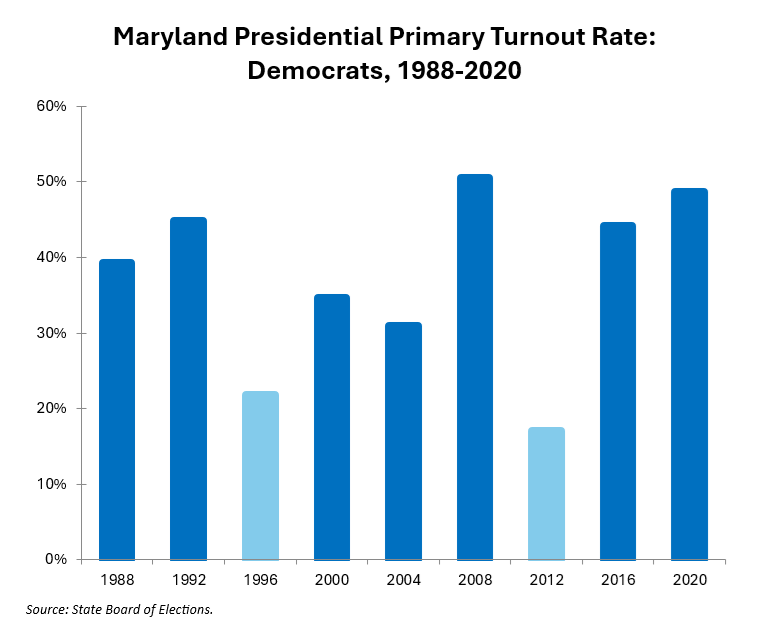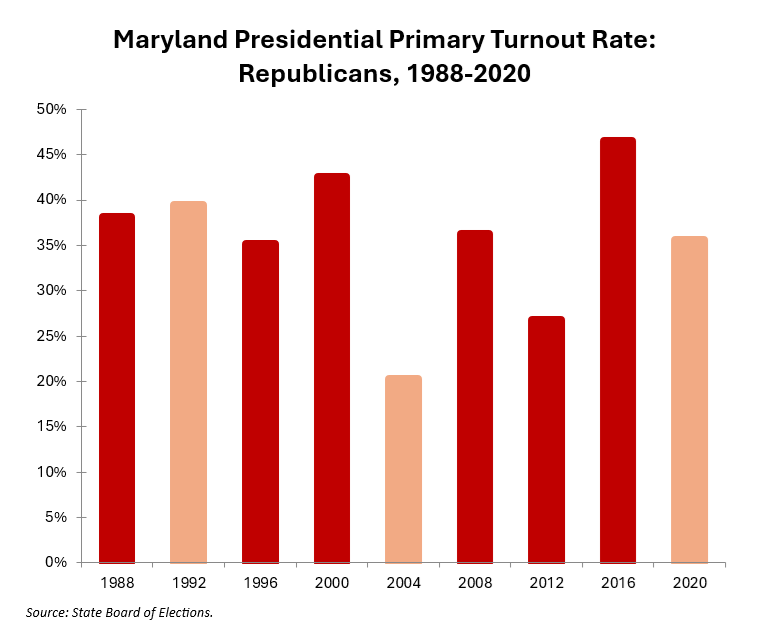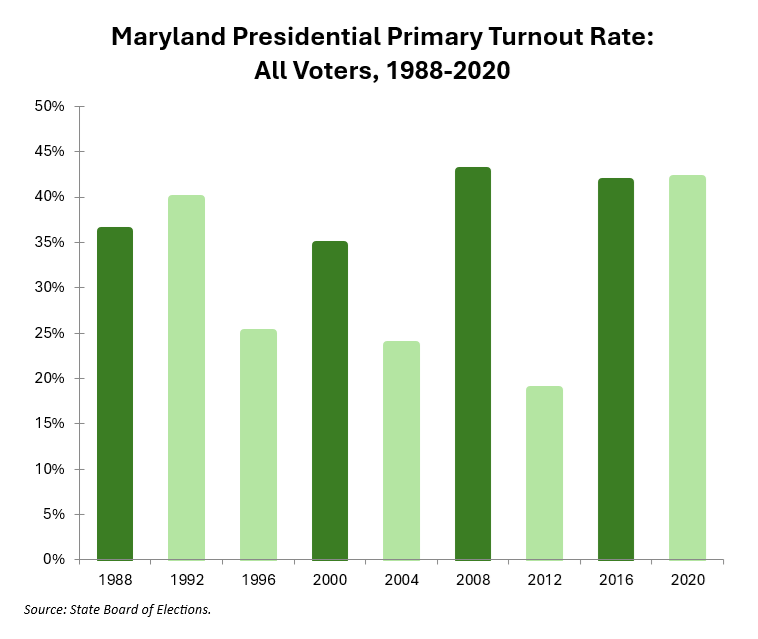By Adam Pagnucco.
In Part One, we learned that early voting has declined in popularity in primaries from its peak usage in 2016. This may reflect the increased popularity of mail voting since the pandemic, especially among Democrats. What will overall turnout be in this year’s primary?
Let’s start by looking at past presidential primaries, starting with the Democrats. The chart below shows presidential primary turnout for Maryland Democrats from 1988 through 2020.

Look at the light blue bars, the ones with the lowest turnout rates. In both of those years, the Democrats had an incumbent president on the primary ballot running virtually uncontested – Bill Clinton in 1996 and Barack Obama in 2012. In those two years, primary turnout among Democrats averaged 19.5%. In the other presidential primary years, which lacked an incumbent Democratic president, turnout averaged 41.8%.
Now let’s look at presidential primary turnout for Maryland Republicans from 1988 through 2020.

The lighter bars are all years in which an incumbent Republican president was on the ballot – 1992 (George H. W. Bush), 2004 (George W. Bush) and 2020 (Donald Trump). In those three years, primary turnout among Republicans averaged 31.8%. In the other years, primary turnout among Republicans averaged 37.6%. However, the difference is driven almost entirely by 2004, in which apathetic Republicans conceded their nomination to Dubya, so the incumbent president effect is weaker than it is among Democrats.
Lastly, the chart below shows presidential primary turnout among all Maryland voters from 1988 through 2020.

The dark green bars are years in which neither party had an incumbent president on the ballot. In those years, primary turnout among all voters averaged 38.9%. The light green bars are years in which one party had an incumbent president on the ballot. In those years, primary turnout among all voters averaged 29.8% – nine points lower.
The data above makes clear that the status of a president affects partisan turnout. When an incumbent president is on the ballot, the members of that president’s party are more likely to stay home in the primary. When a party’s nomination for president is open, members of that party are more likely to vote in the primary. That is particularly true of Democrats but not nearly as much among Republicans.
This year, the Democrats have an incumbent president on the ballot (Joe Biden) so history would suggest that their turnout will not be great in the primary. The Republicans have a former incumbent on their ballot (Donald Trump), an overwhelming favorite to win their nomination and also someone who many Republicans believe did not lose the last general election. Trump is in effect a quasi-incumbent among Republicans. So their turnout may not be great either.
If my theory is correct and turnout is low among both parties, that will affect the composition of the electorate. Overall, the voters should be more likely to be seniors, affluent, White and super-voters (the latter being the ones who always show up). Young people, Latinos, lower income people, new voters and casual voters are typically less represented in low turnout electorates.
That leads to one last question. If the above is the state of the electorate, which candidates will benefit the most? That question has to be weighing heavily on the campaigns, especially those of U.S. Senate candidates Angela Alsobrooks and David Trone.
